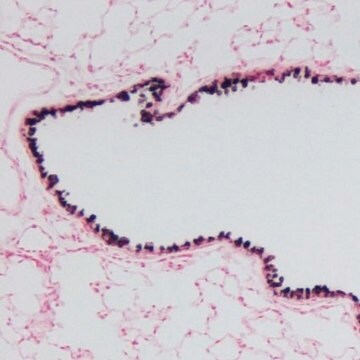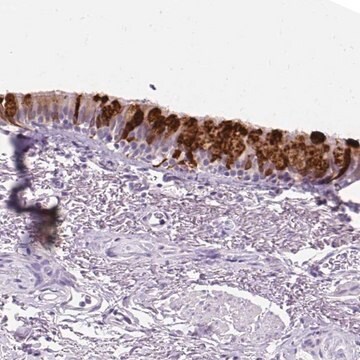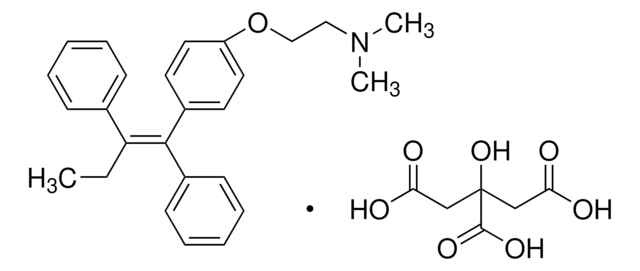ABS1673
Anti-Uteroglobin
serum, from goat
Sinónimos:
Clara cell phospholipid-binding protein, CCPBP, Clara cells 10 kDa secretory protein, CC10, PCB-binding protein, Secretoglobin family 1A member 1, Blastokinin
About This Item
Productos recomendados
origen biológico
goat
Nivel de calidad
forma del anticuerpo
serum
tipo de anticuerpo
primary antibodies
clon
polyclonal
reactividad de especies
mouse
reactividad de especies (predicha por homología)
rat (based on 100% sequence homology)
técnicas
immunofluorescence: suitable
immunohistochemistry: suitable
western blot: suitable
Nº de acceso NCBI
Nº de acceso UniProt
Condiciones de envío
ambient
modificación del objetivo postraduccional
unmodified
Información sobre el gen
mouse ... Scgb1A1(22287)
rat ... Scgb1A1(25575)
Descripción general
Especificidad
Inmunógeno
Aplicación
Immunofluorescence Analysis: A 1:1,000 dilution from a representative lot detected Uteroglobin in mouse lung tissue. (Courtesy of Dr.Barry Stripp at Cedars-Sinai Medical Center, Los Angeles, CA).
Immunohistochemistry Analysis: A representative lot detected Uteroglobin in adult mice alveoli (Rawlins, E.L., et. al. (2009). Cell Stem Cell. 4(6):525-34).
Signaling
Calidad
Western Blotting Analysis: A 1:500 dilution of this antibody detected Uteroglobin in 10 µg of mouse lung tissue lysate.
Descripción de destino
Forma física
Almacenamiento y estabilidad
Otras notas
Cláusula de descargo de responsabilidad
¿No encuentra el producto adecuado?
Pruebe nuestro Herramienta de selección de productos.
Código de clase de almacenamiento
12 - Non Combustible Liquids
Clase de riesgo para el agua (WGK)
WGK 1
Certificados de análisis (COA)
Busque Certificados de análisis (COA) introduciendo el número de lote del producto. Los números de lote se encuentran en la etiqueta del producto después de las palabras «Lot» o «Batch»
¿Ya tiene este producto?
Encuentre la documentación para los productos que ha comprado recientemente en la Biblioteca de documentos.
Nuestro equipo de científicos tiene experiencia en todas las áreas de investigación: Ciencias de la vida, Ciencia de los materiales, Síntesis química, Cromatografía, Analítica y muchas otras.
Póngase en contacto con el Servicio técnico






